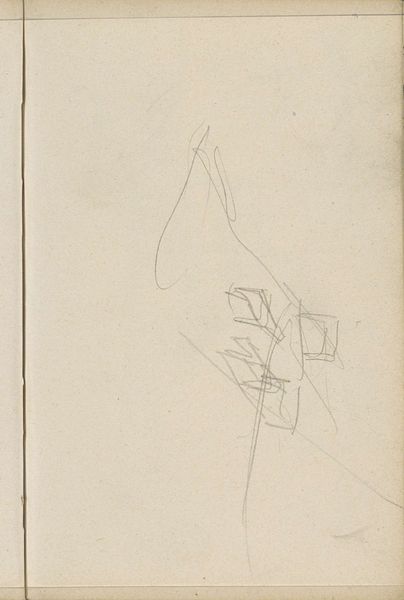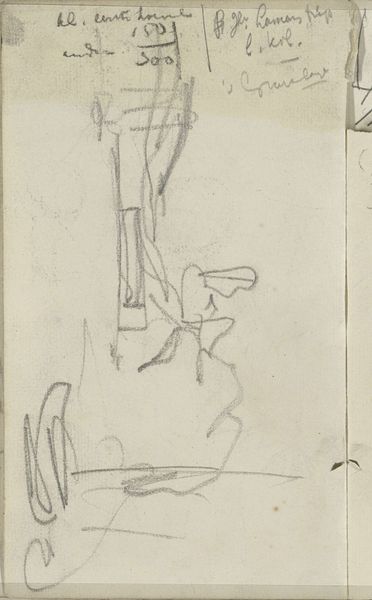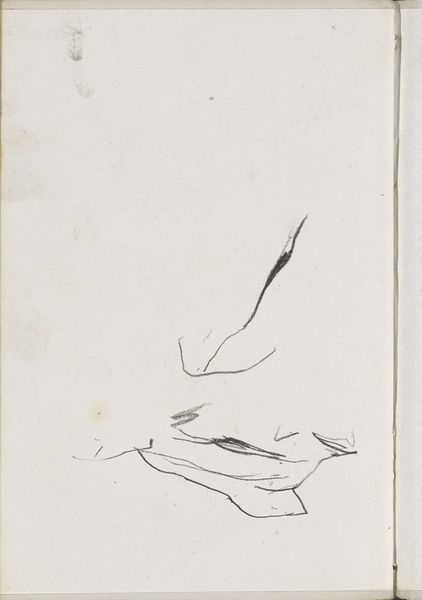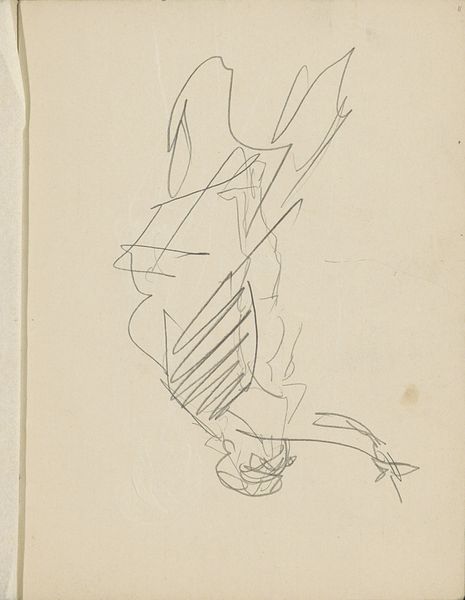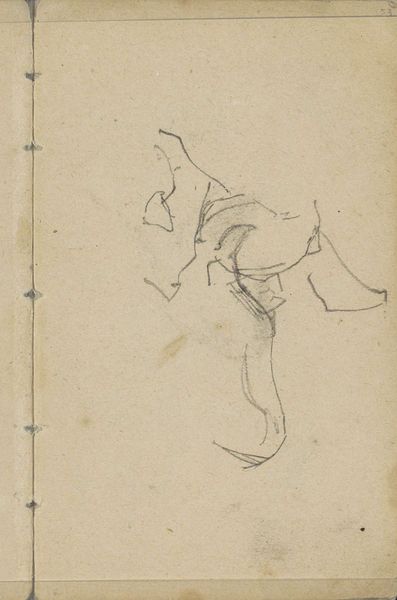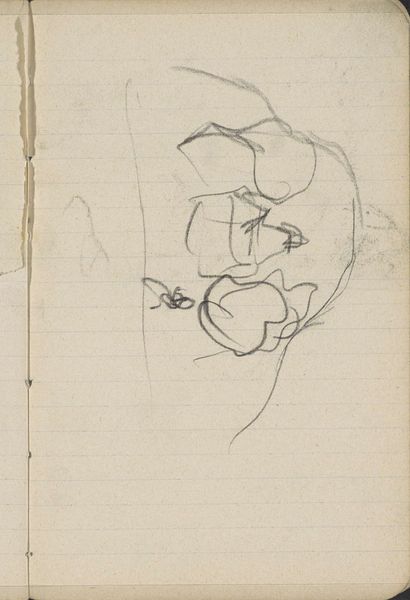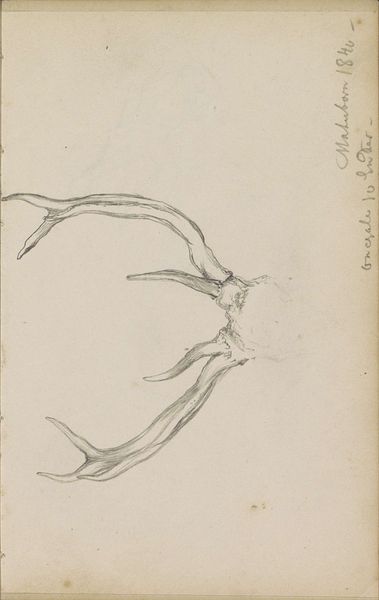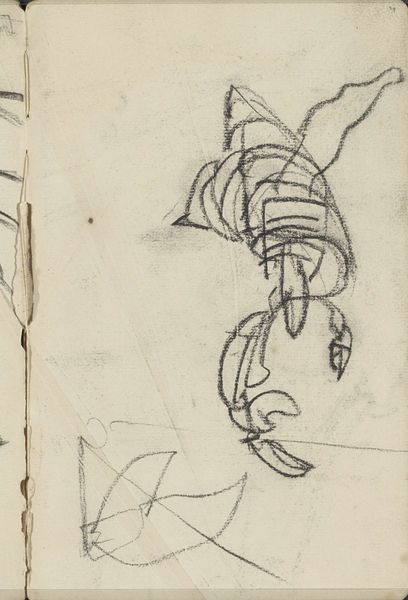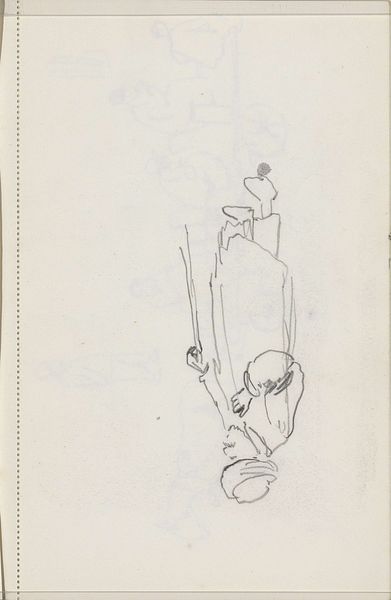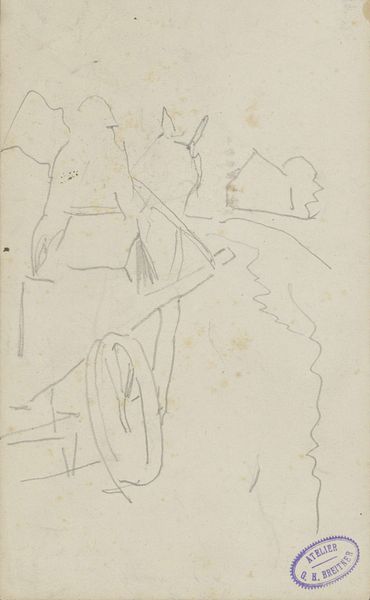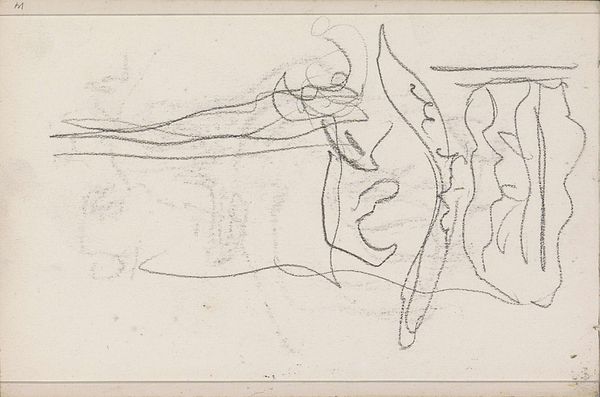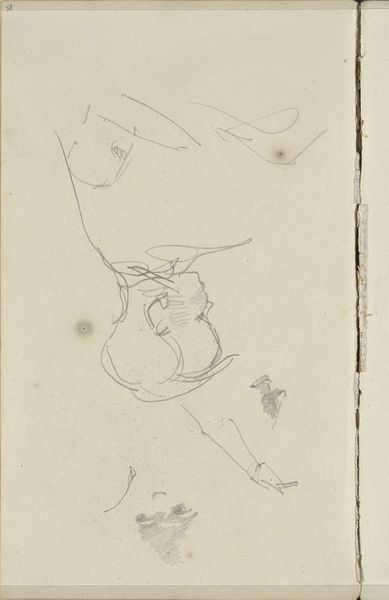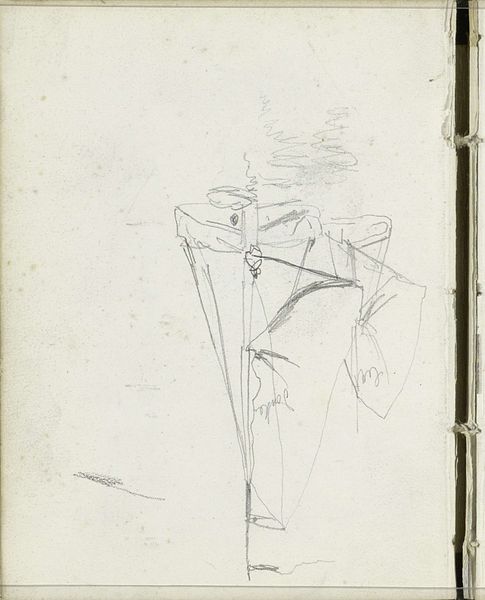
drawing, pencil, graphite
#
drawing
#
light pencil work
#
art-nouveau
#
blue ink drawing
#
form
#
geometric
#
pen-ink sketch
#
pencil
#
line
#
graphite
Copyright: Rijks Museum: Open Domain
Curator: Welcome. We’re standing before "Fantasieornament", a drawing that comes to us from the studio of Carel Adolph Lion Cachet, active between 1874 and 1945. It resides here at the Rijksmuseum, an intricate piece rendered in pencil and graphite on paper. Editor: Intricate indeed! My first thought? It looks like a very elegant keyhole from some bizarre fairytale door. The pencil work is so delicate, barely there on the page. Curator: Yes, Cachet’s work dances between Art Nouveau and the beginnings of geometric abstraction. Think about what symbols hide. Keys are such powerful shapes – promise, exclusion, revelation. A 'fantasy ornament' – is this a secret gateway, then, to Cachet's own interior world, would you guess? Editor: Possibly. I think he’s showing us pure design – the bones of possibility. I imagine him doodling, a quiet rhythm of creation, almost mathematical with that faint grid underneath it all. But that form at the bottom – doesn’t it resemble…almost animalistic curves? A subtle echo. Curator: Intriguing, how the form could be suggestive of living things even while adhering to an intellectualized plan. Cachet used a common structure in ornamentation— symmetry – to trigger particular emotional responses; consider that the piece's visual harmony could reinforce a psychological sense of balance or wholeness. Are we subconsciously seeking order through viewing these kinds of sketches? Editor: Oh, absolutely! A part of our brain latches onto this, maybe yearning for the control that chaos constantly snatches from our lives. I like how ephemeral the drawing feels. I bet it practically vanishes when the light shifts in the room. Curator: It captures a specific cultural memory—of that hopeful moment as modernity unfolded, where ornamentation still felt like magic rather than mere decoration. These weren’t simply flourishes; they were imbued with aspirations, weren't they? Editor: Very well observed! The idea of infusing decoration with grand intention...we've certainly strayed far from that! Looking closer I think, maybe the drawing offers the reassurance that there's order even in things we make up, forms we ourselves create. It really lets you linger, thinking about it all. Curator: Precisely! These seemingly minor pieces provide us keys – metaphorically – into broader, complex human sentiments and impulses. Editor: I agree entirely. The act of ornamentation can allow someone to express even their subconscious understanding of shapes.
Comments
No comments
Be the first to comment and join the conversation on the ultimate creative platform.
